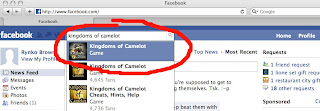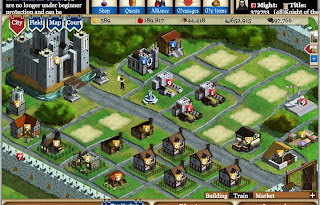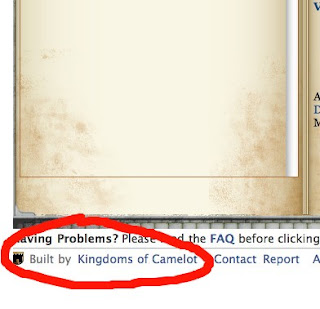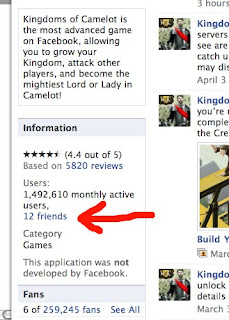Ecosystems are places that naturally change over time. Biodiversity includes both number of species and their abundance relative to each other. The changes in an ecosystem that typically cause concern are the large, drastic ones that reduce biodiversity down to only a few highly dominant species.
More
27 April 2010
20 April 2010
Black Vulture Phylogeny
Inspiration behind: Origin and Phylogeny of Vultures
There are two birds commonly called "black vulture." One is Coragyps atratus which is found in the Americas as a member of family Vulturidae (or Cathartidae). The other is the Eurasian black vulture, Aegypius monachus of the family Accipitridae (eagles, hawks, kites, etc.). The phylogeny of the black vultures in particular isn't especially complicated, but phylogeny of vultures in general can be, since they exist in three distinct groups. Click here for more details, including phylogenetic tree diagrams.
There are two birds commonly called "black vulture." One is Coragyps atratus which is found in the Americas as a member of family Vulturidae (or Cathartidae). The other is the Eurasian black vulture, Aegypius monachus of the family Accipitridae (eagles, hawks, kites, etc.). The phylogeny of the black vultures in particular isn't especially complicated, but phylogeny of vultures in general can be, since they exist in three distinct groups. Click here for more details, including phylogenetic tree diagrams.
19 April 2010
Finding the distance in 3D space between two points: Theory and Real World Use
First, the theory....
Individual points in three dimensional space can be represented on a Cartesian coordinate grid. Each point is noted as three numbers separated by commas, of the form "X, Y, Z," where each number is for a different dimension. The simplest way to calculate the distance between two points is to apply the Pythagorean theorem twice.
Step 1: Suppose your two points are X1, Y1, Z1 and X2, Y2, Z2. If Y1 = Y2 and Z1 = Z2, leaving only the two X numbers different from each other, what you have is a one-dimensional problem. Subtract the smaller X from the larger X.
For example, if your points are 3, 4, 7 and 11, 4, 7, you would subtract as 11 minus 3, giving you a distance of 8.
Step 2: Suppose Z1 = Z2, but the X numbers and Y numbers are both different from each other. What you have is a two-dimensional problem. To solve it, imagine a right-angled triangle where the distance between the two points is the length of the hypotenuse. The Pythagorean theorem states that A^2 + B^2 = C^2. The length of A would be X2-X1, and the length of B would be Y2-Y1. The distance, C, would be the square root of (X2-X1)^2 + (Y2-Y1)^2.
For example, if your points are 3, 4, 7 and 11, 10, 7, you would take the square root of (11-3)^2 + (10-4)^2, or 64 + 36, or 100. This gives you a distance of 10.
Step 3: Suppose all three pairs of numbers are different. Now it's a three-dimensional problem. Calculate C from the X and Y numbers, as in Step 2. This gives you one of the two non-hypotenuse sides of a new right triangle. The other non-hypotenuse side is Z2 - Z1. Applying the Pythagorean theorem again, you would take the square root of (Z2 - Z1)^2 + the first C^2.
For example, if your points are 3, 4, 7 and 11, 10, 22, you would take the square root of (22 - 7)^2 + 10^2, or 225 + 100, or 325. Your distance would be approximately 18.
So much for the mathematical theory. Now, how it would be done if you had an actual physical object, and you couldn't just insert a ruler up inside to get it directly....
To calculate the distance between the upper left front corner and lower right rear corner of a box-shaped object, without measuring from the inside of the object, you only need to know its outside dimensions.
Step 1: Measure the length, width and height of the object.
Step 2: Calculate the squares of each. Multiply length times length, width times width, and height times height. For example, if length is 6, width is 8, and height is 15, their squares would be 36, 64, and 225.
Step 3: Add all of these together. Then take the square root. In our example, that would be the square root of 36 + 64 + 225, which adds up to 325. 18 times 18 is 324, so the square root of 325--and the final answer--is a little over 18.
Individual points in three dimensional space can be represented on a Cartesian coordinate grid. Each point is noted as three numbers separated by commas, of the form "X, Y, Z," where each number is for a different dimension. The simplest way to calculate the distance between two points is to apply the Pythagorean theorem twice.
Step 1: Suppose your two points are X1, Y1, Z1 and X2, Y2, Z2. If Y1 = Y2 and Z1 = Z2, leaving only the two X numbers different from each other, what you have is a one-dimensional problem. Subtract the smaller X from the larger X.
For example, if your points are 3, 4, 7 and 11, 4, 7, you would subtract as 11 minus 3, giving you a distance of 8.
Step 2: Suppose Z1 = Z2, but the X numbers and Y numbers are both different from each other. What you have is a two-dimensional problem. To solve it, imagine a right-angled triangle where the distance between the two points is the length of the hypotenuse. The Pythagorean theorem states that A^2 + B^2 = C^2. The length of A would be X2-X1, and the length of B would be Y2-Y1. The distance, C, would be the square root of (X2-X1)^2 + (Y2-Y1)^2.
For example, if your points are 3, 4, 7 and 11, 10, 7, you would take the square root of (11-3)^2 + (10-4)^2, or 64 + 36, or 100. This gives you a distance of 10.
Step 3: Suppose all three pairs of numbers are different. Now it's a three-dimensional problem. Calculate C from the X and Y numbers, as in Step 2. This gives you one of the two non-hypotenuse sides of a new right triangle. The other non-hypotenuse side is Z2 - Z1. Applying the Pythagorean theorem again, you would take the square root of (Z2 - Z1)^2 + the first C^2.
For example, if your points are 3, 4, 7 and 11, 10, 22, you would take the square root of (22 - 7)^2 + 10^2, or 225 + 100, or 325. Your distance would be approximately 18.
So much for the mathematical theory. Now, how it would be done if you had an actual physical object, and you couldn't just insert a ruler up inside to get it directly....
To calculate the distance between the upper left front corner and lower right rear corner of a box-shaped object, without measuring from the inside of the object, you only need to know its outside dimensions.
Step 1: Measure the length, width and height of the object.
Step 2: Calculate the squares of each. Multiply length times length, width times width, and height times height. For example, if length is 6, width is 8, and height is 15, their squares would be 36, 64, and 225.
Step 3: Add all of these together. Then take the square root. In our example, that would be the square root of 36 + 64 + 225, which adds up to 325. 18 times 18 is 324, so the square root of 325--and the final answer--is a little over 18.
18 April 2010
How to find out which of your friends play a Facebook game
Originally posted at eHow until 14 Apr 2010.
For most Facebook games, you need lots of friends who also play. Otherwise you miss out on bonuses or have a weaker army. But many games don't automatically add all your friends to your friends list - you have to track them down and send requests yourself. This article explains how you can tell which of them already play a game you play, so that you can send requests to the right ones and avoid bothering the rest.
Step 1: Type the game name into Facebook's main search box. When the game appears in the results, click on it.

Step 2: If you don't already play the game, clicking on it from the Facebook search box results will take you directly to the game's Facebook page.
Step 3: If you do already play the game, clicking on it in the search will load the game. You can also just load the game directly without using the search box if you have it bookmarked.

Scroll down to the very bottom of the page. To the bottom left it should say "Built by [game name]" where the game name is a link. Click the link. This will take you to the game's Facebook page.

Step 4: In the left sidebar of the game's Facebook page, there is a box titled "Information." It tells you things like the game's star rating and how many people rated it, how many monthly active users it has, and application category (probably "game").
Right under monthly active users, it tells you how many total friends use the app. This is also a link. Click it to go to the list of friends.

For most Facebook games, you need lots of friends who also play. Otherwise you miss out on bonuses or have a weaker army. But many games don't automatically add all your friends to your friends list - you have to track them down and send requests yourself. This article explains how you can tell which of them already play a game you play, so that you can send requests to the right ones and avoid bothering the rest.
Step 1: Type the game name into Facebook's main search box. When the game appears in the results, click on it.

Step 2: If you don't already play the game, clicking on it from the Facebook search box results will take you directly to the game's Facebook page.
Step 3: If you do already play the game, clicking on it in the search will load the game. You can also just load the game directly without using the search box if you have it bookmarked.

Scroll down to the very bottom of the page. To the bottom left it should say "Built by [game name]" where the game name is a link. Click the link. This will take you to the game's Facebook page.

Step 4: In the left sidebar of the game's Facebook page, there is a box titled "Information." It tells you things like the game's star rating and how many people rated it, how many monthly active users it has, and application category (probably "game").
Right under monthly active users, it tells you how many total friends use the app. This is also a link. Click it to go to the list of friends.

Subscribe to:
Comments (Atom)


